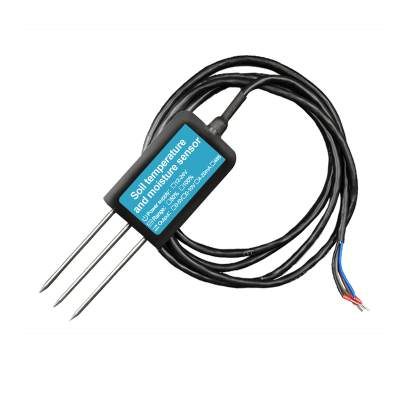In recent years, the importance of water quality monitoring has gained significant attention globally. With the increasing pollution levels and the depletion of fresh water resources, ensuring the safety and purity of water has become a paramount concern for governments, environmental agencies, and the general public. The latest advancements in sensor technology have revolutionized the way we monitor water quality, providing real-time, accurate, and comprehensive data that was previously unattainable. This article delves into the various aspects of water quality monitoring enhanced by the latest sensor technology, exploring its benefits, applications, challenges, and future prospects.

The Evolution of Water Quality Monitoring
Traditional water quality monitoring methods often involved manual sampling and laboratory analysis, which were time-consuming and limited in scope. These methods could only provide snapshot views of water quality at specific points in time and locations. However, with the advent of sensor technology, water quality monitoring has transformed into a continuous, real-time process that can cover vast areas and provide detailed information on various parameters.
Modern water quality sensors are compact, portable, and capable of measuring a wide range of parameters such as pH, dissolved oxygen, turbidity, conductivity, temperature, and even the presence of specific contaminants like heavy metals, bacteria, and organic compounds. These sensors utilize advanced technologies such as electrochemical sensing, optical spectroscopy, and biosensors to detect and measure water quality indicators with high precision and accuracy.
Benefits of Latest Sensor Technology
One of the most significant benefits of the latest sensor technology in water quality monitoring is the ability to provide real-time data. This allows for immediate detection and response to any changes or anomalies in water quality, enabling prompt action to be taken to prevent potential health risks and environmental damage. For example, if a sensor detects a sudden increase in the level of toxic chemicals in a water body, authorities can quickly identify the source and take necessary measures to contain and mitigate the pollution.
Another advantage of sensor technology is its cost-effectiveness. Traditional monitoring methods required significant resources for sampling, transportation, and laboratory analysis. In contrast, modern sensors can be deployed in the field and transmit data remotely, reducing the need for manual intervention and lowering operational costs. This makes water quality monitoring more accessible and affordable, especially for developing countries that may have limited resources.
Furthermore, sensor technology enables continuous monitoring over extended periods, providing a comprehensive understanding of water quality trends and patterns. This data can be used for scientific research, policy formulation, and environmental management. By analyzing long-term data, researchers can identify the causes of water quality changes, assess the effectiveness of intervention measures, and predict future trends.
Applications of Sensor Technology in Water Quality Monitoring
The applications of sensor technology in water quality monitoring are vast and diverse. In the drinking water sector, sensors are used to ensure the safety and purity of tap water. They can detect the presence of harmful substances such as lead, arsenic, and microorganisms, ensuring that the water supplied to households meets the required standards.
In the agricultural sector, sensors play a crucial role in monitoring irrigation water quality. By measuring parameters such as salinity, pH, and nutrient content, farmers can optimize their irrigation practices, reduce water wastage, and improve crop yields.
In environmental monitoring, sensors are deployed in rivers, lakes, and oceans to track water quality and detect pollution sources. They can provide early warning of algal blooms, oil spills, and other environmental hazards, enabling timely response and mitigation measures.
Sensors are also used in industrial settings to monitor wastewater discharge and ensure compliance with environmental regulations. By continuously monitoring the quality of effluents, industries can identify and address any issues related to pollution, thereby protecting the environment and maintaining their social license to operate.
Challenges and Limitations
Despite the numerous benefits of sensor technology in water quality monitoring, there are also challenges and limitations that need to be addressed. One of the main challenges is the accuracy and reliability of sensor data. Sensors can be affected by various factors such as temperature, pressure, and fouling, which can lead to inaccurate readings. Therefore, regular calibration and maintenance of sensors are essential to ensure the accuracy and reliability of the data.
Another challenge is the integration of sensor data with existing monitoring systems. Different sensors may use different protocols and data formats, making it difficult to combine and analyze the data effectively. Standardization of sensor technologies and data formats is necessary to facilitate seamless integration and interoperability.
Furthermore, the deployment and maintenance of sensors in remote or harsh environments can be challenging. Sensors may need to be protected from physical damage, tampering, and vandalism. In addition, power supply and data transmission can be issues in areas without access to electricity or communication networks.
Future Prospects
The future of water quality monitoring lies in the continuous development and improvement of sensor technology. With advancements in nanotechnology, artificial intelligence, and the Internet of Things (IoT), sensors are becoming smaller, more accurate, and more intelligent.
Nanosensors, for example, have the potential to detect trace amounts of contaminants at the molecular level, providing unprecedented sensitivity and selectivity. AI algorithms can be used to analyze sensor data in real-time, identifying patterns and anomalies that may indicate potential problems. IoT technology can enable seamless integration of sensor data with other monitoring systems, facilitating data sharing and collaboration among different stakeholders.
In conclusion, the latest sensor technology has significantly enhanced water quality monitoring, providing real-time, accurate, and comprehensive data that is essential for ensuring the safety and purity of water. While there are challenges and limitations that need to be addressed, the future prospects of sensor technology are promising. With continued innovation and development, sensors will play an increasingly important role in protecting our precious water resources and promoting sustainable environmental management.